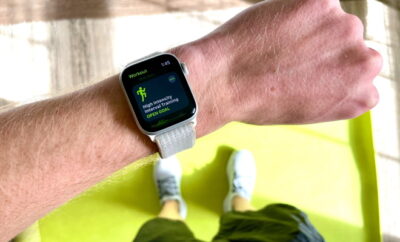
Health x Wellness
Improving Employee Wellbeing in a Hybrid Work Environment
The pandemic has accelerated the trend of hybrid working. The hybrid work model, which incorporates a mixture of in-office and remote work in an employee’s schedule, may look different for every company, but there is one thing in common – there is a greater need for employers to prioritise employee wellbeing, as they work towards adapting in the new normal.
Beyond enabling a healthier workforce, putting employees’ wellbeing first will also enable companies to foster teams that are motivated and engaged, with the ability to weather challenges and thrive post pandemic.
Over the past two years, we have been testing and learning from various workplace initiatives and policies implemented across Asia Pacific markets to adapt to the changing hybrid work arrangements. We (Herbalife Nutrition Asia Pacific and China) have curated a few key tips based on these experiences.
Prioritising community building at the workplace
Companies are more than a business – they should function as a community. However, hybrid and remote working arrangements can make it difficult for employers to build a great workplace culture and for employees to foster stronger work relationships and sense of belonging.
To promote community building in a hybrid work environment, companies can consider redesigning office spaces as collaboration hubs and community building spaces, which are conducive to team collaboration and casual networking.
Business and human resource leaders can also design programs that will help foster better inter- and intra-team relationships, such as organising fitness and wellness-themed team challenges or group activities that promote better interaction and bonding. They can also set up channels for employees to reach out for work and personal development-related support, which will help staff feel like they are part of a community and aptly guided in their career journey with the company.

Enhance nutrition and wellness support as part of employee benefits
The pandemic has accelerated focus on employees’ wellbeing, as well as on their physical and mental health. According to Qualtrics’ 2022 Employee Experience Trends report, the level of employee wellbeing at key APAC hubs is the lowest – 65 percent for Singapore and Hong Kong; and more employees today are making conscious career decisions that will benefit their physical and mental health in the long run.
To help address the issue, companies can take a step further by enhancing their physical and mental wellness benefits. This includes offering subsidies for fitness memberships, organising group workouts and health talk sessions by external experts, and mental health assistance programs that provide confidential, on-demand counselling services to help employees cope with personal and work-related problems.
In addition to the wellbeing resources, companies can consider providing greater flexibility in how and where employees work. As an executive team, we encourage our leaders to listen to employee feedback, and then evolve our approach to balance what’s best for their teams with the requirements of the business.
Develop good nutrition habits
The onus of ensuring employee wellbeing should not fall on employers alone – employees themselves should take the necessary measures to maintain both their physical and mental health. However, amidst their busy schedules, it is not uncommon that many opt for quick meal fixes that could sometimes be unhealthy or skip meals altogether – both are equally damaging habits for our health.
It is proven that good nutrition is key to improving both physical and mental wellbeing. In an article by Harvard Health Publishing, studies show that the risk of depression is 25 percent to 35 percent lower amongst those who eat balanced meals consisting vegetables, fruits, unprocessed grains and protein. According to the 2021 Herbalife Nutrition Asia Pacific Health Inertia Survey, 1 in 2 Singaporeans who saw improvement in their physical health during the pandemic attributed it to eating healthier meals.

Food is fuel and provides much-needed energy to support our bodies. It is important for employees to regularly eat balanced meals whenever they work in office or at home. A balanced nutrition diet ensures that the body gets the nutrients, vitamins, and minerals it needs to function. Should preparing or buying meals become a hassle amidst a hectic day, they can always opt for protein shakes that provide with them with their daily nutrition needs.
Set aside time for activities that will improve physical and mental health
The 2021 Herbalife Nutrition Asia Pacific Health Inertia Survey also found that Singaporeans attributed exercising more as an important reason for their improved physical and mental wellbeing during the pandemic. Also, 53 percent of Singaporeans stated having more personal time and space is among the key reasons for their improved overall wellbeing.
To maintain mental and physical wellness which are closely linked to each other, employees are strongly encouraged to set aside time – either daily or a few times a week – to either exercise or engage in activities that will help relieve stress or improve their mood. This includes finding a creative outlet by reconnecting with pastimes or their favorite hobbies, stay active by finding recreational activities they enjoy, meditating or simply connecting with friends and family either over a meal or an activity. Being in a good mood may also have a positive impact on their productivity and efficiency at work.
With hybrid working being the norm moving forward, improving employee wellbeing in the workplace should be a key priority, requiring collective efforts from both employers and workers themselves, in order to navigate the needs and challenges of this new workstyle.
This article was contributed by Stephen Conchie, Senior Vice President and Managing Director, Herbalife Nutrition Asia Pacific and China.
Photos by Barney Yau on Unsplash, ja ma on Unsplash, bruce mars on Unsplash









